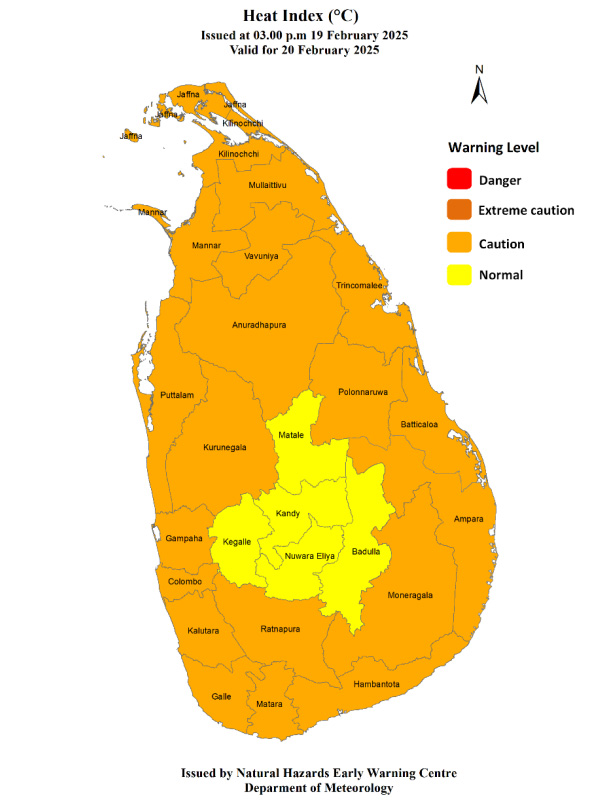
The Ceylon Electricity Board (CEB) mentions that it has implemented instant and long-lasting measures to enhance grid stability following the nationwide power failure on February 9, 2025.
Issuing a statement clarifying the reason for the power failure and future actions to be taken as long-lasting grid stability options, the CEB acknowledged the hassle caused to the general public during the across the country power failure that occurred on February 9, 2025, at 11.13 a.m.
and guaranteed the general public that immediate and long-term restorative actions are underway to prevent future occurrences.Cause of the Power FailureA system-wide failure was triggered by a disruption at the 33kV Panadura Grid Substation, leading to an unexpected voltage drop across the network.
At the time of the event, over 50% of nationwide electricity demand was fulfilled by 800 MW of solar photovoltaic (PV) generation, with extra supply from Lakvijaya Power Plant at Norochcholai (470 MW) and hydropower plants (130 MW), according to the CEB.Due to the high penetration of non-synchronous solar PV generation, the grid had a low system inertia, making it vulnerable to faults.
The disruption resulted in an imbalance between generation and demand, resulting in cascading disconnections and a total power failure, it added.Key Factors Contributing to the Outage: The High Solar PV Penetration - & Low Inertia: A lack of concurrent generation made the grid more susceptible to voltage and frequency disturbances.Solar PV Disconnection: A sharp voltage drop triggered numerous solar PV systems to detach, getting worse the imbalance and additional destabilizing the grid.The Norochcholai Power Plant Tripping: This was an automated protective action by this plant to the system instability, not due to an internal plant failure.
The step prevented disastrous damage to the power plant and extended outages.Additionally, the blackout was affected by the Sunny Sunday effecta condition where low weekend need integrated with high generation from solar PV develops grid instability.
With the majority of commercial and industrial customers offline, the grid was running with lowered need and minimized inertia, making it more prone to unexpected disturbances.Immediate Corrective ActionsCEB has actually carried out urgent steps to stabilize the nationwide grid and avoid similar failures, consisting of: Maintaining more simultaneous generators at minimum generation and operating picked gas turbines in simultaneous condenser mode at crucial locations to enhance grid stability and voltage support.Curtailing ground-mounted solar PV generation (just when required) during low-demand durations to alleviate instability risks.Medium-Term StrategiesTo even more strengthen grid reliability, CEB remained in the process of executing the following steps, which will be sped up: Adjusting roof solar PV inverter settings to prevent unnecessary disconnections during small disturbances/faults, making sure grid resilience.Introducing special commercial tariffs for weekends and vacations to encourage markets to move operations to low-demand periods, consequently helping grid stability.Promoting solar installations with proper BESS capacities over solar PV installations without BESS and to present a tariff for the Solar PV customers with Battery Energy Storage Systems (BESS) and the pertinent hardware.Long-Term Grid Stability SolutionsCEB is committed to long-lasting financial investments to improve the national power grid to incorporate more renewable energy while keeping stability.
These consist of: Deploying grid-forming inverters with BESS to offer synthetic inertia and frequency stabilization.Installing emergency situation backup generators at Norochcholai Power Plant to ensure fast reconnection and continued operation of crucial systems in case of future disconnections.Accelerating the Maha Oya Pumped Hydro Project (Water Battery) a 600 MW storage facility that will improve grid flexibility and energy security.Advancing Smart Grid investments to improve real-time tracking and control of renewable energy integration.CEBs Commitment to a Reliable Power SupplyThe CEB acknowledged the trouble caused to the public asserting that it remains completely dedicated to making sure a durable, trustworthy, and future-ready electrical energy grid.
As Sri Lanka continues to transition towards a sustainable energy-driven power system, CEB is proactively executing both instant and long-term services to enhance grid stability.

 8
8















